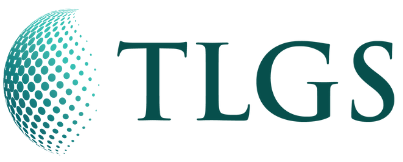INTRODUCTION
In the contemporary fast-paced world, the utilization of Over-The-Top (OTT) platforms has experienced a steady surge in popularity with burgeoning populace switching to these digital platforms, forsaking the conventional entertainment industries. The OTT sector in India witnessed a 30% rise in the number of paid subscribers, from 22.2 million to 29.0 million between March and July 20202. People find great pleasure in watching their favourite shows and series on OTT platforms due to relaxation of censorship and the diverse array of distinctive narratives that are offered at an affordable price. OTT Platforms stand out, due to their knack to grasp the audience’s preferences and provide tailored recommendations for movies and shows, a feature notably absent in other platforms. Furthermore, OTT Platforms have effectively fostered a sense of global unison by offering a diverse array of movies and series in various international languages, offering a valuable platform for artists to exhibit their talents to the world, regardless of where they are located geographically.
1<ahref=”https://www.freepik.com/free-photo/cinema-theater-multimedia-1lm-entertainment-concept_1710G117.ht
m#query=movie%20streaming&position=15&from_view=search&track=ais”>Image by rawpixel.com</a> on Freepik 2 How the pandemic has changed the streaming landscape for good |Business Insider India, https://www.businessinsider.in/advertising/media/article/how-the-pandemic-has-changed-the-streaming-landscape -for-good/articleshow/87354590.cms (last visited Oct 10, 2023).
Many of us have wondered about the regulatory mechanism governing these platforms. Recently, the Telecom Disputes Settlement and Appellate Tribunal (TDSAT), in the case of All India Digital Cable Federation v. StarIndia Private Limited3(hereinafter referred to as “Star India case”), held that OTT Platforms are regulated by the Information Technology Act, 2000, the Information Technology (Intermediary Guidelines and Digital Media Ethics Code) Rules, 2021 (hereinafter referred to as the “IT Rules”) and the Regulations framed under the TRAI Act. In the said case, TDSAT passed an interim order stating that OTT Platform falls outside the jurisdiction of the Telecom Regulatory Authority of India (hereinafter referred to as “TRAI”).
Regulation of OTT Platforms in India
OTT Platforms do not have independent legislation or a body similar to the Central Board of Film Certification (CBFC) or The Cinematographic Act of 1952. Instead, they are governed by the Ministry of Electronics and Information Technology (MeitY) in accordance with the Information Technology Act of 2000, the Rules framed thereunder in the year 2021 and the Regulations framed under the TRAI Act. The initial step towards establishing regulations for OTT Platforms was taken through IT Rules. These IT Rules were formulated under the power conferred by Sections 87(1), 87(2)(z), and 87(2)(zg) of the Information Technology Act (IT Act), 20004.
The IT Rules introduced a Three-tier Grievance Redressal Mechanism. The three tiers of the Grievance Redressal Mechanism are briefly set out below:
Tier I – Self-Regulation by the Publishers by appointment of a Grievance Officer based in India who shall be a point of contact for any grievance related to the Code of Ethics, and act as the nodal point of interaction with the complainant, the self-regulating body and, the Ministry. Complaints received at thistier must be resolved within 15 days and be communicated to the Complainant within the specified time5;
Tier II – Establishment of an independent self-regulatory body by the Publisher headed by a retired judge of theSupreme Court, a High Court, or an independent eminent person being an expert from the field of media, broadcasting, entertainment, child rights, human rights or such other relevant field registered with the Ministry of Information & Broadcasting (hereinafter referred to as “MIB”) to hear appeal filed by the complainant
___________________________________________________________________________
3 All India Digital Cable Federation v. Star India Private Limited, Broadcasting Petition/217/2023 with MISC APPLICATION/236/2023
4IT(Intermediary Guidelines and Digital Media Ethics Code) Rules, 2021 English.pdf,
https://mib.gov.in/sites/default/files/IT%28Intermediary%20Guidelines%20and%20Digital%20Media%20Ethics %20Code%29%20Rules%2C%202021%20English.pdf (last visited Oct 10, 2023).
5 Rule 11 of the IT Rules, 2021.
against the Publisher, address grievances not resolved by the Publisher within a period of 15 days, provide guidance to the Publishers on various aspects of the Code of Ethics and monitor it to ensure that the Publisher complies with and follows the Code of Ethics6; and, Tier III – Establishment of an Inter-Departmental Committee by the MIB, as an Oversight Mechanism which would hear and examine grievances, issue appropriate guidance, advisories, order and directions to the Publishers for the maintenance and adherence to the Code of Ethics7.
Article 19(1) of the Indian Constitution primarily influenced the area of content regulation prior to the implementation of the IT Rules. Under Article 19(2), the Government has the authority to limit Freedom of Speech and Expression. If any content on an online platform is deemed to be against public order, the Government has the power to ban it. In addition to this, the Indian Penal Code (IPC), the Protection of Children from Sexual Offences (POCSO) Act, and the IT Act, 2000 have played significant roles in content regulation.
Control of TRAI Over OTT Platforms
Over the past decade, there has been a significant increase in competition between the OTT platforms and the cable operators, primarily due to a substantial rise in OTT subscribers. TRAI has received numerous representations from cable operators, urging them to bring OTT services under its regulatory framework to create a level playing field.
In the past, TRAI had made several attempts to regulate OTT Platforms. The Department of Telecommunication has released a Draft Telecom Bill classifying OTT players as telecommunication services. The rationale behind this attempt was to regulate OTT Platforms similarly to telecom operators. Additionally, TRAI issued a Consultation Paper on the regulation of OTT Platforms in 20238. The Consultation Paper aimed to address issues such as
price inequality in the entertainment industry and content regulation on OTT Platforms9. Another crucial aspect to consider is the previous directive from TDSAT, instructing OTT platforms like Netflix and Hotstar to provide information about their content to TRAI. Under
6 Rule 12 of the IT Rules, 2021.
7 Rule 13 of the IT Rules, 2021.
8 TRAI releases Consultation Paper on Regulatory Mechanism for Over-The-Top (OTT) Communication Services, and Selective Banning of OTT Services. |Telecom Regulatory Authority of India, https://www.trai.gov.in/notifications/press release/trai-releases-consultation-paper-regulatory-mechanism-over-top
-ott (last visited Oct 10, 2023).
9 OTT Ordeal : An Analysis of the Telecommunication Bill,
https://www.khuranaandkhurana.com/2022/12/29/the-ott-ordeal-an-analysis-of-the-telecommunication-bill-2022/ (last visited Oct 10, 2023)
the IT Act, the decision to share information is ultimately up to the user, and sharing information by internet intermediaries without the consent of the user, violates its provisions. Furthermore, OTT Platforms are not required to be licensed under Section 4 of the Indian Telegraph Act of 1885, which brings in the conundrum of TRAI having to follow both the IT Act and the Indian Telegraph Act, and ultimately diminishing its powers to delve into the matters of the OTT Platform.
This matter is sub judice before the Delhi High Court, and the ruling of the Star India Case may shed light on the pending matter, since TDSAT has clarified that the Ministry of Electronics and Information Technology (MeitY) isresponsible for regulating OTT Platforms.
The Star India Case and the Rulingof TDSAT
The interim order by TDSAT in the Star India case marked a turning point in the ongoing debate over the regulation of OTT Platforms. TDSAT addressed the previously disputed question of whether TRAI has the authority to regulate OTT Platforms, or not, and the answer to this question surprised the Department of Telecom.
In the Star India case, the All India Digital Cable Federation (AIDCF) filed a Broadcasting Petition alleging that Star India was violating TRAI Regulations by allowing the streaming of World Cup 2023 matches on Disney+ Hotstar. The primary argument put forth by AIDCF was that offering free streaming of the matches was unfair, given that a significant portion of the population was paying a subscription fee for access to the Star Sports TV channel. Their
demand was to cease the practice of offering free streaming of cricket matches. In its order, TDSAT held that OTT Platforms do not fall under the jurisdiction of TRAI. The Tribunal pointed to various relevant provisions contained in the Regulations of 2017 to arrive at an inference that there was no prima facie case in favour of the Petitioner. Essentially, this means that Star India can continue to stream cricket matches on Disney+ Hotstar, and anyone wishing to watch the matches through Star Sports Channel, will be required to pay for the subscription fee for the same.
While not granting the Stay as prayed for by the Petitioner, TDSAT observed in its interim order that the Petitioner is free to maintain a separate list of consumers who have subscribed to the Star Sports channel on their platform and the same could be presented before it prior to the final hearing.
Business Revival Strategies of Disney
Disney is one of the prominent OTT players in India and currently grappling with a decline in its subscriber base. According to the latest reports, Disney has been operating at a loss in India, with its streaming operations reporting a loss of $41.5 million on revenue of $360 million for the year ending in March 202210. To revive its business, Disney implemented a strategy of offering free streaming of cricket matches on smartphones. The hope was that this new business strategy would boost advertising revenue and, thus, mitigate the effects of decrease in the number of subscribers. Another new initiative introduced by Disney was the display of interactive ads that connect viewers to a brand’s WhatsApp chat, facilitating product purchases.
Additionally, Disney’s report disclosed a new deal with Coca-Cola for boosting subscriptions. However, it is important to note that the cricket matches would still be under a subscription plan. In the short run, offering free streaming may help revive the business to some extent. However, in the long run, it may not be sustainable, as generating revenue solely from advertisements is a challenging task considering the skyrocketing cricket acquisition prices, as noted by Uday Sodhi, Senior Partner at Kurate Digital Consulting11.
CONCLUSION
The TDSAT ruling in the Star India Case marks a shift, suggesting that the role of TRAI in regulating OTT Platforms may be diminishing. While it is true that Disney and other companies can now employ their own market strategies to enhance their businesses, but there is an important caveat. The resurgence of one business should not come at the expense of others, as
it could potentially lead to unfair trade practices. Therefore, the decision of TDSAT represents a significant development in the realm of OTT Platform regulation, but it has also unveiled a host of questions and concerns that may arise in the future. Concerns related to unjust streaming practices and content regulation still remain unaddressed, awaiting further scrutiny. These are matters that can only be properly examined and resolved over time and as comprehensive guidelines and regulations are formulated in future.
10 Disney gambles on free cricket to turn the tables in India streaming war |Mint,
https://www.livemint.com/companies/news/disney-gambles-on-free-cricket-to-turn-the-tables-in-india-streaming war-11693285702818.html (last visited Oct 10, 2023).
11 Ipl: Will the bet on streaming ‘cricket for free’ pay off?, ET BrandEquity,
https://brandequity.economictimes.indiatimes.com/news/media/will-the-bet-on-streaming-cricket-for-free-pay-off/ 102961388 (last visited Oct 10, 2023).
Poonam Malhotra is the Ex-Judge, District Consumer Forum, New Delhi. She is currently the Principal Advisor, TLGS Consulting Group. (https://tlgs.consulting/people/ )
Ms. Reshma A R is currently a Manager at TLGS Consulting Group, and is a lawyer who graduated from the National University of Advanced Legal Studies in Kochi.
Ms. Shani A R is currently an intern at TLGS Consulting Group, and is a law student from the National University of Advanced Legal Studies in Kochi.

